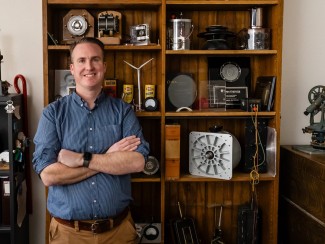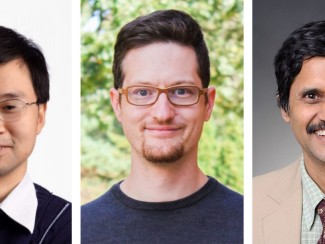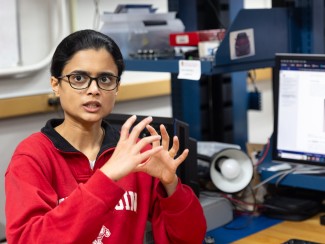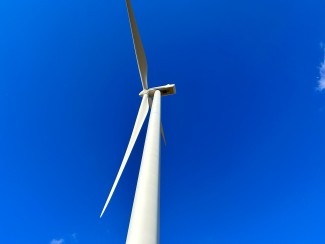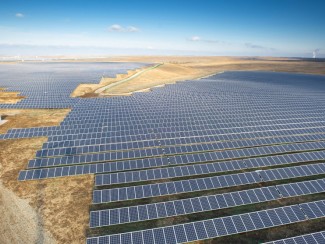The history of energy-related research at UW–Madison, part 2
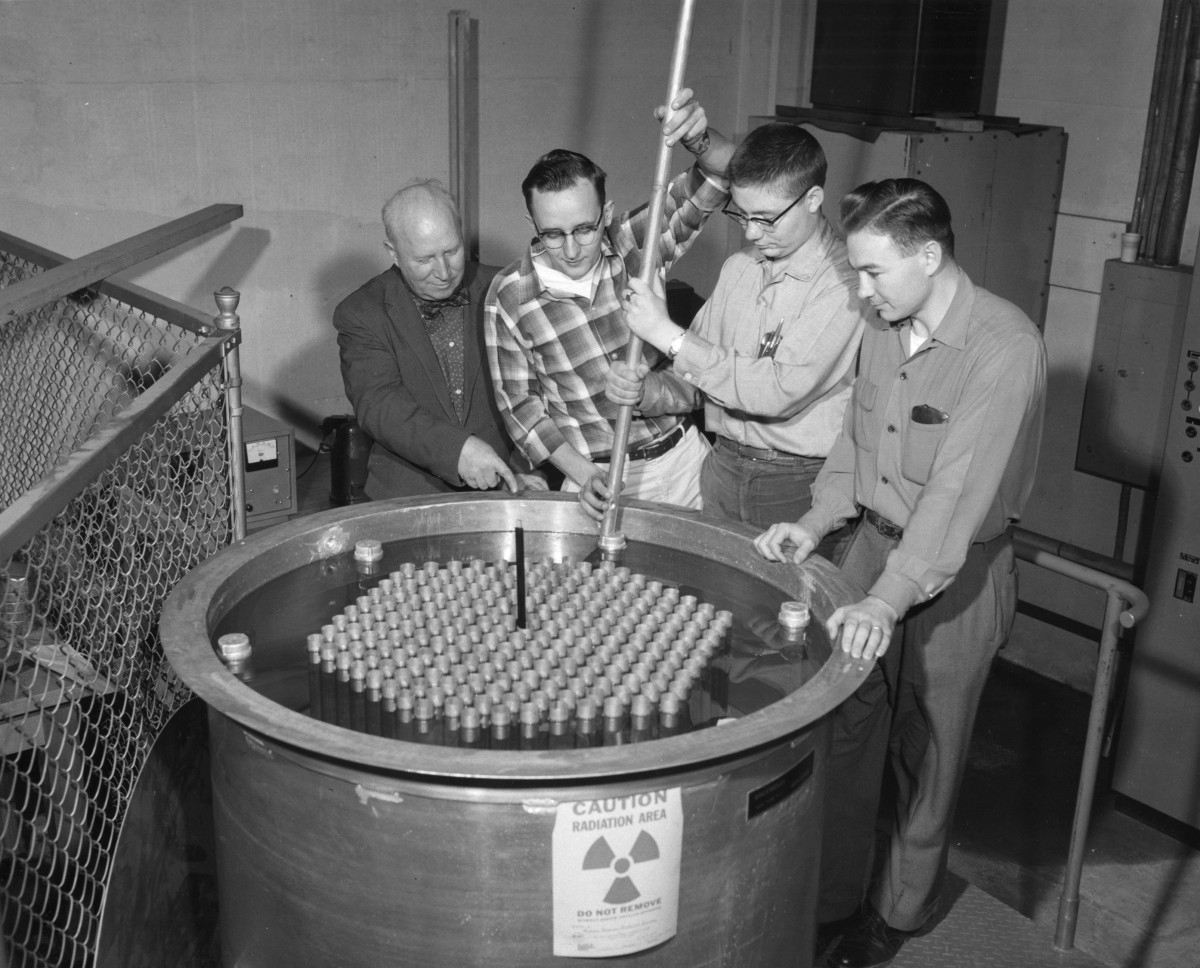
In the leadup to the second World War, scientists from the University of Wisconsin–Madison contributed to research on high-test aviation fuel as well as efforts to build the first atomic bomb.
Professor Raymond Herb designed two particle accelerators – also known as “atom smashers” – loaned to the Los Alamos lab, where they generated data for the Manhattan Project.
Many of those scientists returned to the university after the war, bringing with them research interests and funding from the Atomic Energy Commission. According to the university’s official history book, in 1950 the university held six AEC grants, more than any other university.
The university began construction in 1960 of a small nuclear reactor in the Mechanical Engineering Building. Completed the following year and later upgraded to 1 megawatt, the reactor is used for research and training but doesn’t generate electricity.
Jerry Kulcinski was a senior studying chemical engineering when the reactor was commissioned and was the second person to join the new Nuclear Engineering Department under the leadership of Professor Max Carbon.
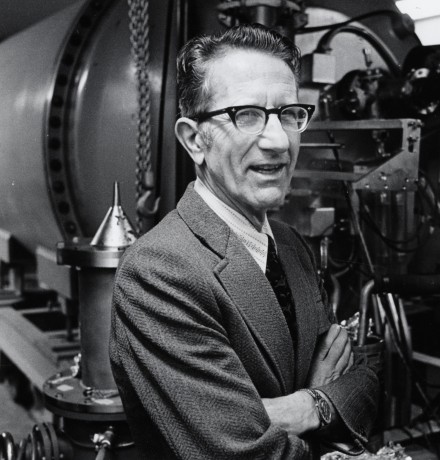
After completing his PhD in 1965, Kulcinski went to work on federal projects at Los Alamos and the Hanford Site, where he developed an interest in the emerging field of nuclear fusion, the source of the sun’s energy.
Kulcinski returned to the university as a faculty member in 1971 and started the Fusion Technology Institute to investigate the engineering challenges of harnessing fusion energy.
Fusion, the source of the sun’s energy, occurs when hydrogen atoms merge under intense heat and pressure, forming new atoms and releasing vast amounts of energy. Unlike fission, or splitting atoms, fusion produces no radioactive waste.
With a virtually limitless supply of fuel and no real pollution, fusion has the potential to be a “game changing” source of clean, reliable energy, said Steffi Diem, professor of nuclear engineering and physics.
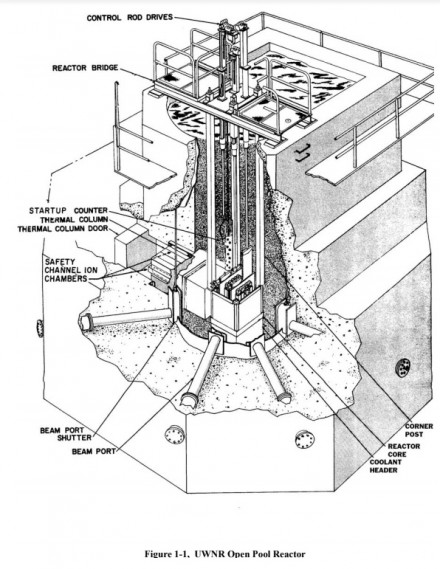
The only catch: figuring out how to get the fuel ten times hotter than the sun and confine it long enough to achieve a self-sustaining reaction.
“We decided that, okay, if the physics works, now what are you going to do?” Kulcinski said. “How are you going to make power reactors to make electricity and so forth?”
Laying out the need for pollution-free electricity in 1972, Carbon announced a $1 million initiative to design such a plant, cautioning that a full-scale commercial plant might not be reality until the late 1990s.
Despite a much-touted breakthrough in late 2022 in which a lab created a momentary reaction that generated more energy than it consumed (if you don’t count the energy needed to power the giant laser), the promise of a virtually unlimited source of clean energy remains just beyond the horizon.
“We thought we'd have fusion power plants online by the turn of the century,” Kulcinski said. “The physics turns out to be harder than people thought.”
Recognizing the challenges, Kulcinski shifted his research in the early 2000s to other applications, including a company he launched that uses drones to detect landmines.
“We’re not making electricity,” Kulcinski said. “We’re using fusion to make the neutrons to detect the nitrogen in the explosives."
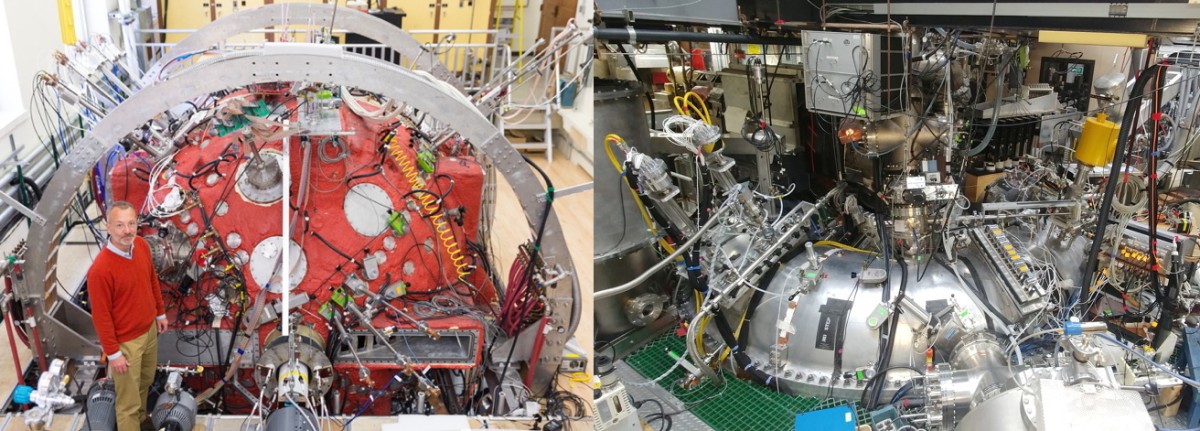
WiPPL
Other UW–Madison spinoffs are using fusion technology to make radioactive isotopes for medical imaging and to detect flaws in aircraft components.
But university researchers including Diem are still doing the basic science to enable commercial electricity generation in the next two decades.
Diem first learned about fusion science as an undergraduate engineering student at UW–Madison.
Today she runs Pegasus-III, one of several campus experiments studying the properties of plasma, a state of matter where electrons break free from atoms, forming an atomic soup of charged particles where fusion is possible.
Her goal is to figure out how to heat hydrogen gas to 10 times the temperature of the sun and hold it in a magnetic bottle so that fusion can occur.
Another fusion project – a partnership between UW–Madison and spin-off company Realta Fusion known as WHAM (Wisconsin HTS Axisymmetric Mirror) – achieved a major milestone in July by generating plasma in a device at the Physical Sciences Lab in Stoughton, Wis.
“The outlook for decarbonizing our energy sector is just much higher with fusion than anything else,” says Cary Forest, a UW–Madison physics professor who has helped lead the development of WHAM. “First plasma is a crucial first step for us in that direction.”
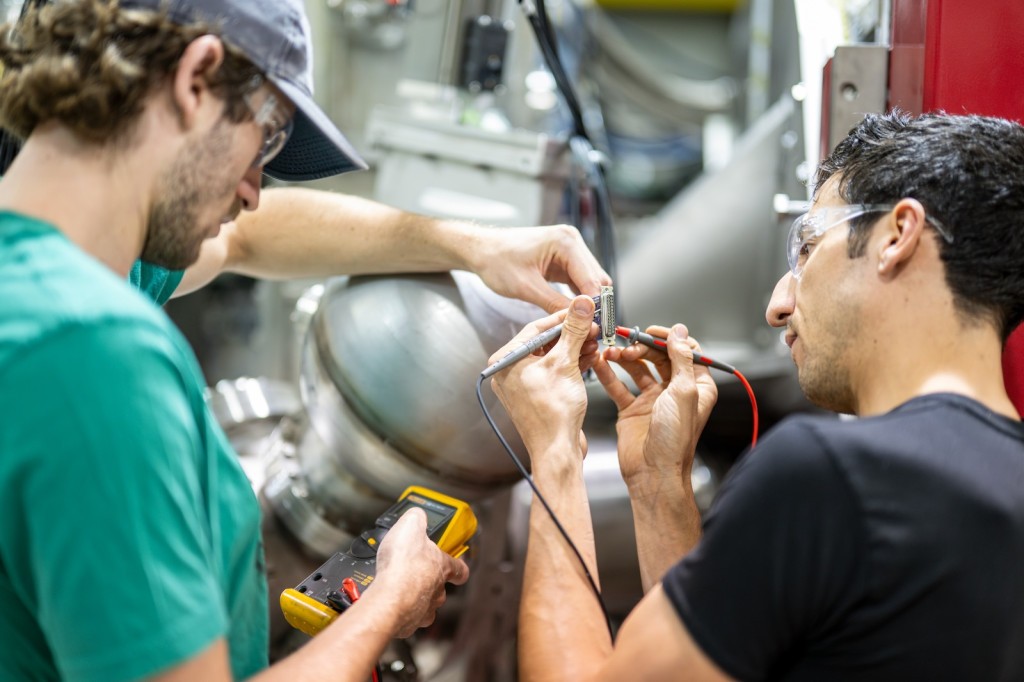
With more than 400 graduates – including 167 PhDs – the Fusion Technology Institute is one of the nation’s oldest and largest programs for advanced degrees in fusion engineering.
Oliver Schmitz, the engineering college’s associate dean for research, studies plasma edge physics for fusion energy applications. A native of Germany, Schmitz said he came to Madison in 2014 because of its nuclear energy programs.
“Whenever I travel to fusion events elsewhere, it seems like 80% of the participants are UW–Madison graduates,” Schmitz said in an address to the Wisconsin Technology Council.
Harnessing the sun
One of the Manhattan Project scientists who returned to the university after World War II was a chemist named Farrington Daniels.
Though he made significant contributions in the field of chemistry and helped establish the Argonne National Laboratory, Daniels is best known for his late-career interest in harnessing the power of the sun, which he said in 1948 would satisfy needs for food, fuel, and power once oil and coal had been used up.
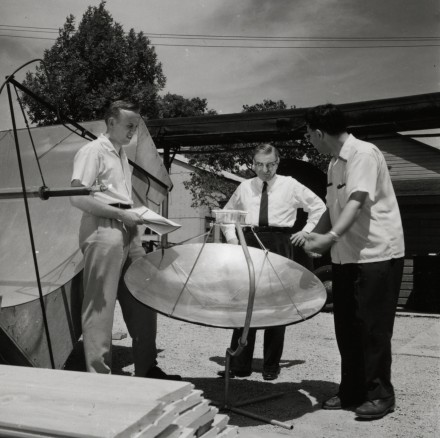
In 1954, Daniels and chemical engineering professor Jack Duffie launched the Solar Energy Lab, believed to be the first of its kind in the nation.
At a time when fossil fuels were cheap and abundant and climate change not yet a major concern, there was no interest in research on domestic use of solar energy, but Daniels secured funding to build solar ovens for developing nations with little access to electricity or clean fuels.
Though they worked as designed, Daniels’ solar cookers had one significant flaw: they didn’t work at night, when most people did their cooking.
Sanford Klein, an emeritus professor of mechanical engineering and former solar lab director, joined the lab as a young grad student in 1973, when the oil crisis sparked renewed interest in renewable domestic energy sources.
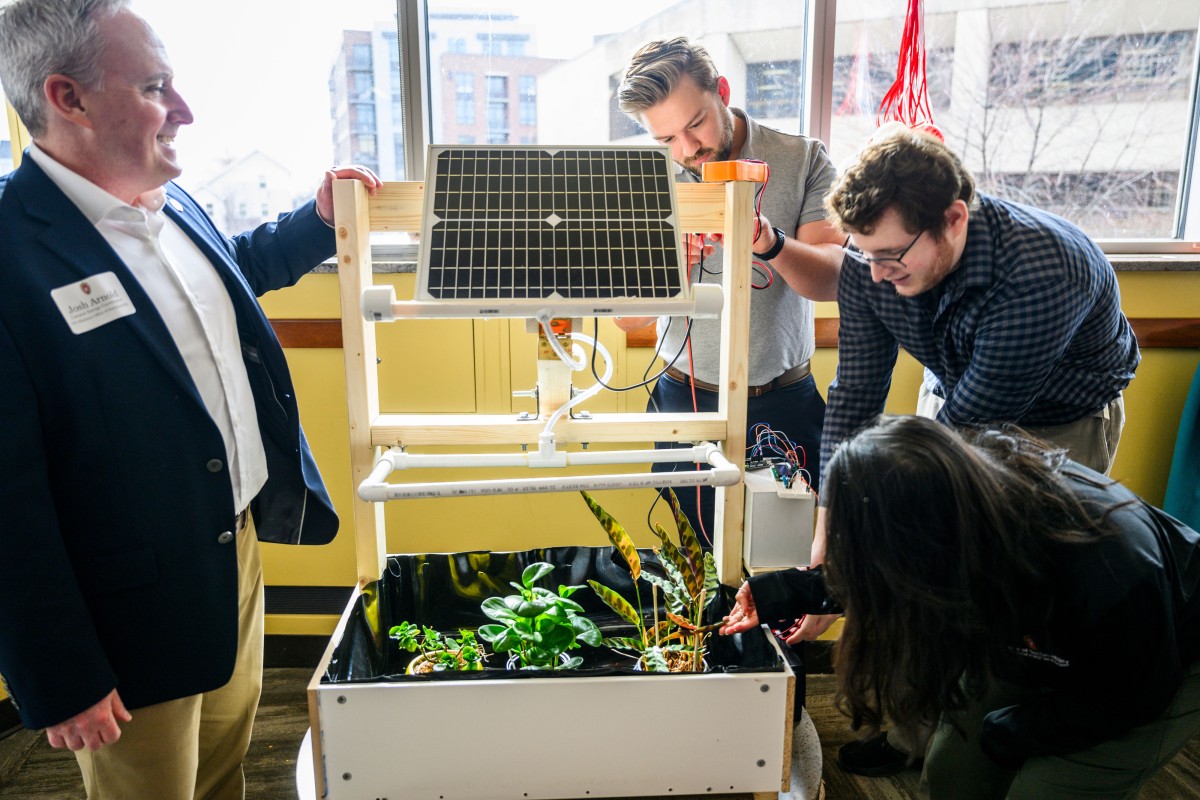
“I was interested in energy for all the wrong reasons,” Klein said. “I thought we were gonna run out. Who knew that we’d destroy the world with global warming before we’d run out of energy?”
But the energy crisis passed, and so did the funding, which led the lab to broaden its focus into other thermal systems, energy management and control strategies, and even air quality.
Among the lab’s most enduring contributions is a piece of software that Klein developed to model the performance of solar energy applications. Known as TRNSYS, the tool can be used to model all types of dynamic systems, including traffic flow and biological processes. Licensed to a company run by solar lab alumni, the software royalties continue to fund lab operations.
Today the lab’s members are primarily focused on heat transfer and thermodynamics, including systems that operate at temperatures from -458 degrees Fahrenheit (near absolute zero) to nearly 2,200 degrees.
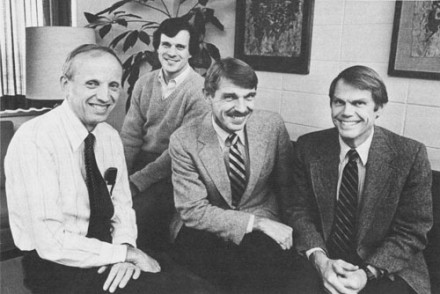
“We keep the name,” Nellis said. “It's got brand recognition … and I think people don't want to give up the culture that is sort of associated with the name.”
The unifying theme behind all the work is enabling decarbonization.
“Our mission, to the extent that we have one, is to support the decarbonization effort … and basically to train students that can go out … and really drive that forward.” Nellis said. “Our main product is the student… I think that's going to be our continuing legacy.”

